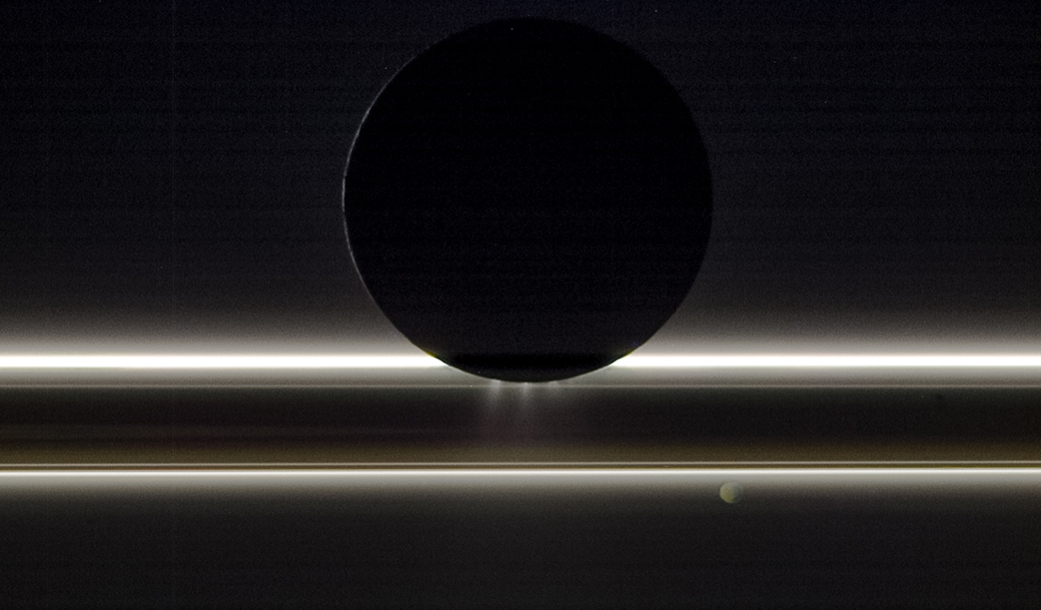Saturn Moon Enceladus Blasts Rings with Geysers in Gorgeous Cassini Photo

The beauty, intrigue and diversity of the Saturn system come through loud and clear in a newly released photo that doesn't even show the giant planet itself.
The image, which was captured by NASA's Cassini spacecraft in November 2009, shows the 314-mile-wide (505 kilometers) Saturn moon Enceladus spraying its famous geysers into space, with the gas giant's rings glowing in the background.
Saturn's small, icy satellite Pandora, which measures a mere 52 miles (84 km) across, is visible just below the ring plane. [Saturn's Icy Moon Enceladus: Amazing Photos]
Pandora "was on the opposite side of the rings from Cassini and Enceladus when the image was taken," NASA officials said in a description of the image, which was released Tuesday (Feb. 13). "This view looks toward the night side on Pandora as well, which is lit by dim golden light reflected from Saturn."
Cassini was about 149,600 miles (240,800 km) from Enceladus and 352,200 miles (566,800 km) from Pandora when the spacecraft took the photo, according to the photo description.
Cassini is no longer with us: The orbiter ended its long and productive life on Sept. 15, 2017, with an intentional death dive into Saturn's atmosphere. Cassini was running out of fuel, and the mission team wanted to dispose of the probe safely, making sure it never contaminated Enceladus or fellow Saturn moon Titan with microbes from Earth.
Both of these satellites may be capable of supporting life as we know it. Enceladus' geysers, for example, are blasting out salty water and other material from an ocean that sloshes beneath the moon's icy shell.
Breaking space news, the latest updates on rocket launches, skywatching events and more!
The $3.2 billion Cassini-Huygens mission launched in October 1997 and arrived in the Saturn system in the summer of 2004. Huygens was a piggyback European Space Agency probe that touched down on Titan in January 2005, pulling off the first-ever soft landing on an object in the outer solar system.
Follow Mike Wall on Twitter @michaeldwall and Google+. Follow us @Spacedotcom, Facebook or Google+. Originally published on Space.com.

Michael Wall is a Senior Space Writer with Space.com and joined the team in 2010. He primarily covers exoplanets, spaceflight and military space, but has been known to dabble in the space art beat. His book about the search for alien life, "Out There," was published on Nov. 13, 2018. Before becoming a science writer, Michael worked as a herpetologist and wildlife biologist. He has a Ph.D. in evolutionary biology from the University of Sydney, Australia, a bachelor's degree from the University of Arizona, and a graduate certificate in science writing from the University of California, Santa Cruz. To find out what his latest project is, you can follow Michael on Twitter.
